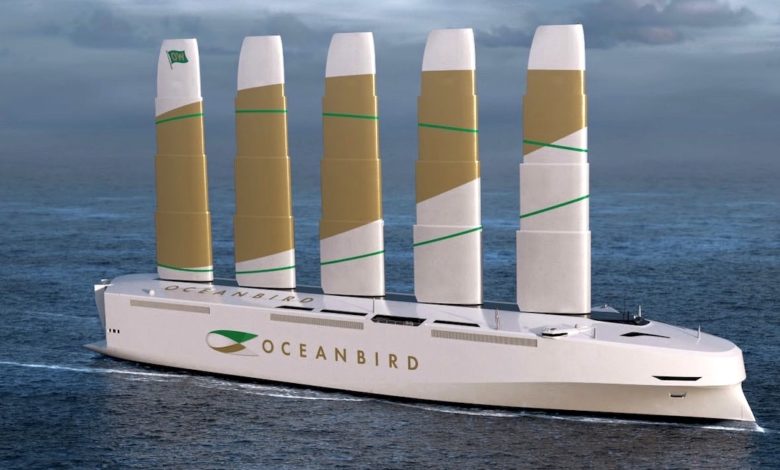Swedish consortium unveils wind-powered vessel capable of carrying 6,000 vehicles

A Swedish consortium including Wallenius Marine is set to give a sneak peak of its revolutionary new wind-powered car carrier design this Thursday.
The Oceanbird, capable of carrying 6,000 vehicles, has been created by the the KTH Centre for Naval Architecture, maritime tech developer SSPA and Wallenius Marine. The Swedish Transport Administration agreed funding for the project from 2019 through to 2022.
“Thousands of years have passed since we learnt to harness the wind. The wind helped us discover our planet – now it can help us preserve it. Oceanbird is about revolutionizing technology that will make cargo vessels in maritime transport truly sustainable. The wind is back,” the Swedish consortium stated in a release. Further details of the new ship design, which features sails that are 100 m high, are to be unveiled during a webinar on Thursday.
The vessels will not travel as fast as today’s car carriers. Instead of taking seven or eight days to cross the Atlantic, the wind-powered vessels are expected to need up to 12 days.
Teams in Germany and France are also in the process of developing their own sail-based car carriers, albeit with far smaller carrying capacities than what’s on the drawing board in Sweden.

Cool technology for the very rich.
How many ports will be inaccessible to a vessel of this configuration due to sail height not clearing bridge decks?
the sails retract like telescopes
Ah! Now I see it – thank you! Let’s see how workable this actually is beyond a digital rendering…
The funders are the stupid ones here …….
An unmanned ship, controlled by technology and powered by wind.
I give you a very short answer which sums it all up:
“Sounds good, doesn’t work”
as many pass the panama canal,this ships will not be able to pass anymore and as earlier comment many ports cannot be entered?
Beam and draft probably won’t be an issue for the Panama Canal. And as was pointed out to me, the “sails” have a telescoping design that should allow them to retract, although this would indicate to me that there is some sort of stored power to run the propulsion and other ship systems in “sail down” mode.
Will an automated ship be allowed through the Panama Canal is a whole other issue? I would bet “not” unless there is a capability to have a canal pilot either climb aboard or remotely operate the vessel from a shore station.
The specific technologies that emerge out of this R+D is what will provide the real benefit eventually. (Consider the space race through the 60s, 70s and 80s, and the beneficial developments that found their way into mainstream life.)
As my children learn about propulsion development they don’t understand why wind should be more expensive than a fuel that took millions of years to produce, whilst sequestrating a high CO2 atmosphere. They would be stupid if they grew up and operated the same design of ships as we have been for the last 50 years. It would probably be better for their kids if they operated a ship more closer in propulsion design to something from 200 years ago.